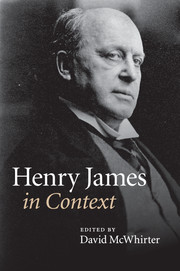Book contents
- Frontmatter
- Contents
- List of Illustrations
- Notes on Contributors
- Preface
- Abbreviations
- Chronology
- Part One Life and career, times and places
- Part Two Historical and cultural contexts
- Chapter 9 Aestheticism and Decadence
- Chapter 10 Authorship
- Chapter 11 Children
- Chapter 12 Consumer culture
- Chapter 13 Cosmopolitanism
- Chapter 14 Courtship, marriage, family
- Chapter 15 Ethics
- Chapter 16 Language
- Chapter 17 Law
- Chapter 18 Manners
- Chapter 19 Media and communication technologies
- Chapter 20 Modernism
- Chapter 21 Money and class
- Chapter 22 Museums and exhibitions
- Chapter 23 Nationalism and imperialism
- Chapter 24 Print culture
- Chapter 25 Psychology
- Chapter 26 Race
- Chapter 27 Realism and naturalism
- Chapter 28 Sexualities and sexology
- Chapter 29 Social sciences and the disciplines
- Chapter 30 Things
- Chapter 31 Time
- Chapter 32 Travel and tourism
- Chapter 33 Urbanity
- Chapter 34 Visual culture
- Chapter 35 Women and men
- Chapter 36 Work
- Part Three Reception
- Further reading
- Index
- References
Chapter 19 - Media and communication technologies
Published online by Cambridge University Press: 05 August 2014
- Frontmatter
- Contents
- List of Illustrations
- Notes on Contributors
- Preface
- Abbreviations
- Chronology
- Part One Life and career, times and places
- Part Two Historical and cultural contexts
- Chapter 9 Aestheticism and Decadence
- Chapter 10 Authorship
- Chapter 11 Children
- Chapter 12 Consumer culture
- Chapter 13 Cosmopolitanism
- Chapter 14 Courtship, marriage, family
- Chapter 15 Ethics
- Chapter 16 Language
- Chapter 17 Law
- Chapter 18 Manners
- Chapter 19 Media and communication technologies
- Chapter 20 Modernism
- Chapter 21 Money and class
- Chapter 22 Museums and exhibitions
- Chapter 23 Nationalism and imperialism
- Chapter 24 Print culture
- Chapter 25 Psychology
- Chapter 26 Race
- Chapter 27 Realism and naturalism
- Chapter 28 Sexualities and sexology
- Chapter 29 Social sciences and the disciplines
- Chapter 30 Things
- Chapter 31 Time
- Chapter 32 Travel and tourism
- Chapter 33 Urbanity
- Chapter 34 Visual culture
- Chapter 35 Women and men
- Chapter 36 Work
- Part Three Reception
- Further reading
- Index
- References
Summary
In the long afterlife of Henry James’s cultural presence, his appearance in Nonverbal Communication: Notes on the Visual Perception of Human Relations (1956), an illustrated psychology textbook by Jurgen Ruesch and Weldon Kees, must count among the more unexpected. Ruesch and Kees first mention James as part of a brief discussion of how ‘metacommunicative statements’ can give social advantage to those who recognize minute shifts in emotional context and emphasis, while those less observant – upon whom everything is lost, as James might have put it – are often subject to staggering misunderstandings. Ruesch and Kees cite The Sacred Fount as an especially telling proof that ‘the most worldly and discerning of novelists . . . are continuously and even obsessively preoccupied’ with the difficulties and ‘ironies’ of communication. Given that James’s stock was never higher than in the decades following World War II, it is easy enough to guess that such a reference was meant in part to capitalize on the growing reputation of his novels as investigations into the technicalities of human relations – manners, gestures, conversation – at the upper limit of nuance and complexity. Literature, for Ruesch and Kees, is imagined as a laboratory where techniques and practices of communication are tested, scrutinized and dissected. And no author pursues these investigations with more systematic rigour than James.
- Type
- Chapter
- Information
- Henry James in Context , pp. 203 - 213Publisher: Cambridge University PressPrint publication year: 2010



